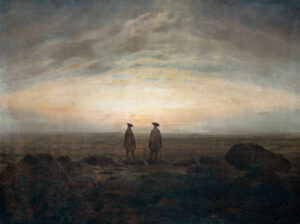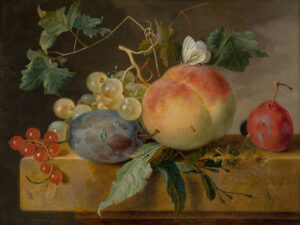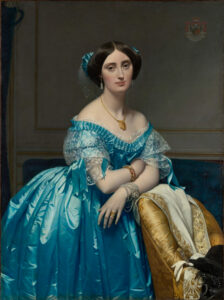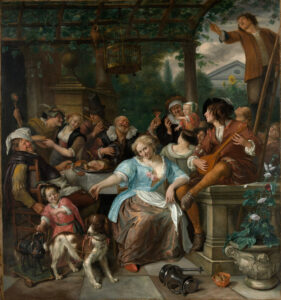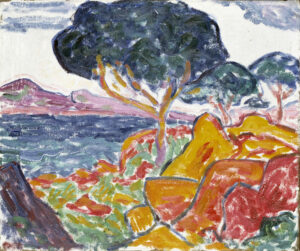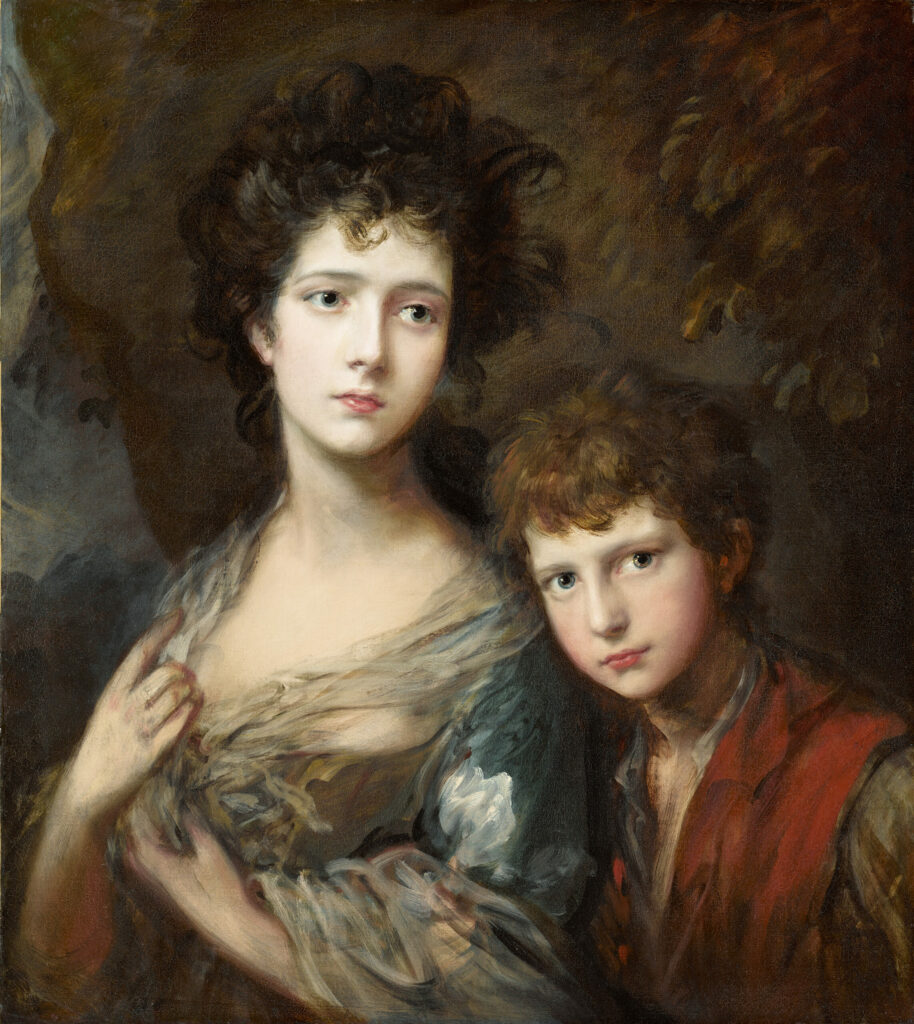
This work by Thomas Gainsborough bears witness to 18th-century English portraiture in its most intimate dimension.
Painted around 1768, this double portrait of Elizabeth and Thomas Linley reveals the painter’s particular affection for this family of accomplished musicians from Bath. Elizabeth, a celebrated singer, and her young brother Thomas, a violin prodigy, pose in a setting that evokes the pastoral ideal dear to Gainsborough.
The master’s technique unfolds with virtuosity: the faces, with delicate and precise modeling, contrast with the free and spontaneous brushwork of the curly hair, shimmering fabrics, and surrounding background. This stylistic duality, the artist’s signature, gives the work a striking modernity. The refined palette harmonizes perfectly with the golden light that bathes the composition. This family portrait transcends the fashionable commission to achieve remarkable psychological truth.
Further information
- Thomas Gainsborough, Elizabeth and Thomas Linley, ca. 1768, oil on canvas. Clark Art Institute, 1955.955
- 27 1/2 x 24 1/2 in. (69.8 x 62.3 cm)
- The Clark Art Institute, Williamstown
- https://www.clarkart.edu/ArtPiece/Detail/Elizabeth-and-Thomas-Linley
Thomas Gainsborough (1727-1788) remains one of the major figures of the English school of painting. Born in Suffolk, trained in London under Hubert Gravelot, he developed a personal style combining the elegance of portraiture with landscape sensibility. Established in Bath then in London, he rivaled Reynolds for aristocratic clientele while cultivating his passion for landscape. Painter to King George III, member of the Royal Academy, Gainsborough revolutionized the art of portraiture by infusing it with unprecedented spontaneity and psychological truth. His free technique, influenced by Van Dyck, anticipated Romantic developments. A friend to artists, he captured with particular empathy the world of arts and letters of his time, creating works of a modernity that would lastingly influence British art.

